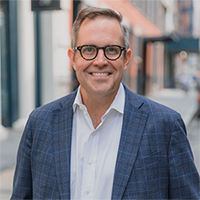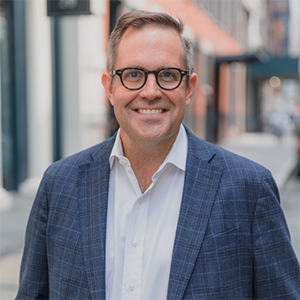
Digital audio is booming. In fact, after taking a major hit in the early days of the Pandemic, eMarketer had to revise their 2020 estimate from a 1.0% decline in the time spent with digital audio to 8.3% growth as consumers started tuning into digital radio and podcasts. And despite the ad spend downturn, podcast revenues soared, nearing $1 billion in 2020, according to the IAB Podcast Advertising Revenue Report.
In response, platforms and advertisers are doubling down on audio — leaning into highly engaged millennial and Gen Z audiences that are turning to podcasts for their unique storytelling and personality-driven approach. Following this accelerated growth, there’s been a transformation in how ads are being created and delivered in the audio landscape as programmatic becomes a more viable option in the space. Most notably, Spotify and Amazon have expressed plans to up their audio options for brands, and even Entercom has acquired podcast adtech platform Podcorn.
I’ve been wondering if this rush of ad dollars coming into the audio pipeline and move to streamline the ad supply chain with programmatic is opening the door for fraud to invade the quickly growing podcast and audio advertising ecosystem. So, I turned to Ryan Adams, SVP of Partnerships at Kubient for his take on the opportunities in the audio space, how publishers can grow their audio business, as well as how audio can stay fraud-free.
Lynne d Johnson: Audio is really starting to take off, especially with podcasting leading the pack. What are the opportunities in the audio space and how did the pandemic accelerate the audio landscape?
 Ryan Adams: Digital audio, and most notably programmatic audio, has experienced tremendous growth during the pandemic. As the nation moved into quarantine, Americans shifted their drive-time listening to streaming their favorite music and podcasts.
Ryan Adams: Digital audio, and most notably programmatic audio, has experienced tremendous growth during the pandemic. As the nation moved into quarantine, Americans shifted their drive-time listening to streaming their favorite music and podcasts.
According to Global Web Index, streaming audio on platforms such as Spotify and Pandora increased 37% and podcast streaming increased 15% during the pandemic. With users shifting their listening habits, more advertising space became available in this space.
While sponsorships and live reads still exist, digital ads became more prevalent to fill open inventory and make the process more seamless. Streaming services, podcasts, and local radio stations turned to programmatic as an additional revenue source, as direct ad buys and ad budgets with publishers were impacted because of a brand’s loss of revenue or fear of brand safety or suitability.
LdJ: What advice would you give to publishers or media companies looking to build or grow their audio business and how can they best work with advertisers in the audio landscape?
RK: As popularity in the audio space grows, so does competition. For publishers and media companies looking to grow their audio businesses, they need to find content that will resonate with their audience and act as an extension of current offerings, providing the same value as their written, digital, or video content.
In the podcast and larger audio space, their talent needs to have interesting and engaging journalistic content, as well as a host that listeners can feel an authentic connection to, whether it’s through tone or passion for the content. For advertising, audio needs to take a page from the video space where less is more. Users are wanting: 15 or 30-second spots as opposed to the: 60s and 90s in a more traditional space. We might even see some short: 5 or 6-second spots — like Reddit did during the Super Bowl — appear on audio because it fits with the casual nature of the platform.
LdJ: How has programmatic changed the traditional audio landscape, as well as the flurry of audio-centric social offerings like Clubhouse, Twitter Spaces, and others?
RK: Digital has allowed for better and more accurate targeting and reporting in the audio space, really opening doors for this emerging platform. What used to be a space of a very large footprint – both from audience and geographies alike – now advertisers can be selective about ads that are presented to listeners. Additionally, advertisers can not only engage with a specific audience in a specific location, but they can also attribute those listens back to business objectives. This allows for more efficient media buying, leading to better ROI and less wasted ad spend.
LdJ: With more ad dollars going to audio, how do we keep audio ‘fraud free’?
RK: As an industry, digital advertising will always battle fraud, and digital audio is no exception – although it has been thought of as fraud-free or premium. We’ve worked hard at Kubient to develop a pre-bid Fraud Prevention technology to catch fraud before it takes place and wastes ad dollars on fraudulent traffic.
The benefit of this approach is that we significantly increase the delivery of real potential customers, performance against KPIs. As new formats emerge like programmatic audio and digital out of home, we need to stay on top of the latest in sophisticated bot schemes, to ensure ad budgets are being spent on real impressions and opportunities to get in front of audiences.
LdJ: What is your prediction for the audio landscape in 2021?
RK: According to eMarketer, Americans spent an hour longer consuming media in 2020 and all of that was spent on digital formats. Despite the country coming out of the pandemic, experts are not expecting our screen time to decrease dramatically YoY. In return, advertisers had to adapt to a digital-first strategy in 2020, and we are not expecting that to change in 2021.
For audio, we will continue to see more streaming music and podcasts, and more demand for ads in this space. From a creative perspective, I think we’ll start seeing a shift to more digital-friendly ads (shorter, companion banners, etc.) rather than just repurposing ads made for a more traditional space or relying heavily on table reads from on-air talent.